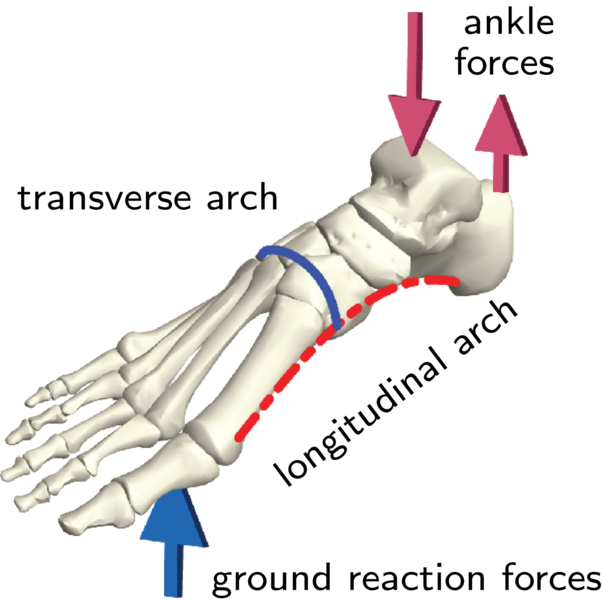Previously overlooked part of the human foot is the key to its development and function
A new discovery has turned our entire perception of the function and evolution of the human foot upside-down. The discovery has recently been published in the scientific journal Nature.

A long-overlooked part of the human foot now turns out to be the key to how the foot works, how it has evolved, and how we walk and run.
The discovery turns upside-down almost a century of conventional thinking about the human foot, and it may pave the way for new research in evolutionary biology and have a major impact on the design of foot prosthetics and robotics, for example.
The discovery has been published in the scientific journal Nature and it was made by an international team of researchers from Yale University, the University of Warwick, Okinawa Institute of Science & Technology and the Department of Engineering at Aarhus University (AU).
When we humans move about, we constantly push the front of our foot onto the ground with a force far exceeding our own bodyweight. Nevertheless, our foot maintains its shape without bending significantly.
Rigid feet are unique for humans among primates, and they were an important element in the development of our ability to walk on two feet; bipedalism. But what makes the human foot so stiff?
According to conventional thinking, primarily the longitudinal arch of the foot, the medial longitudinal arch (MLA) is the answer. The arch runs from the heel to the forefoot and is reinforced by elastic tissue. This creates a structure which, for almost an entire century, was regarded as the most important source of stiffness in the foot.
However, the foot has another arch, the transverse tarsal arch (TTA), which runs across the width of the mid-foot. This arch has not previously been studied. The research team conducted a number of experiments on the arch using mechanical models, feet from human bodies, and fossil samples from the long-extinct ancestors of homo sapiens.
The results show that the TTA is the most important element behind the rigidity of our feet. In fact, the research team says that the TTA is responsible for almost half of the rigidity of the foot, and this is significantly more than the MLA contributes.
"Imagine that you're eating a slice of pizza. To strengthen the slice, and prevent it from bending downwards losing all the topping, you bend the crust causing the entire slice to arch upwards. This curvature gives the slice of pizza structural rigidity," says Assistant Professor Marcelo Dias from the Department of Engineering at AU, who designed the mathematical models and numerical simulations in the project.
The discovery may also explain how the hominid, Australopithecus afarensis, which lived 3-4 million years ago, could walk on two legs and leave a human-like footprint, even though it seems that it had no longitudinal arch to its foot.
By means of a new technique developed by the research team to measure the transverse curvature from bone fragments, the researchers were able to establish that the transverse arch probably developed around 3.5 million years ago – 1.5 million years before the origin of the Homo genus – and that it was an important step in the development of the modern human being.
"This means that it looks as if the human-like heel-to-toe gait may have developed 3.5 million years ago because the TTA developed at this time. Moreover, this is also in line with the preserved footprints found in parts of Ethiopia from that epoch," says Marcelo Dias.
Contact
Assistant Professor Marcelo Dias
Mail: madias@eng.au.dk
Tel.: +45 93508876
